
Concept explainers
(a)
Interpretation: The glycosidic linkages of the stachyose are to be labeled.
Concept introduction: Monosaccharides are the small units of simple sugars. Polysaccharides are made up of small units of monosaccharides. These small units are joined together by glycoside linkage.
Answer to Problem 28.66P
The red colored oxygen atoms are a part of glycosic linkages as hown below.
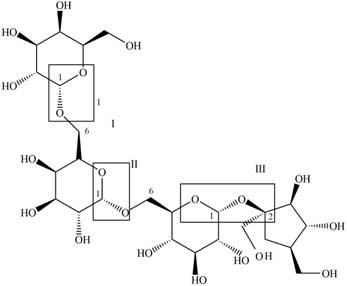
Figure 1
Explanation of Solution
The structure of stachyose,

Figure 1
The acetals containing alkoxy groups attached to anomeric carbons in the stachyose represent the glycosidic linkages. The red colored oxygen atoms are a part of glycosic linkages.
The glycosidic linkages of the stachyose are shown in Figure 1.
(b)
Interpretation: Each glycosidic linkages of the stachyose are to be classified as
Concept introduction: Monosaccharides are the small units of simple sugars. Polysaccharides are made up of small units of monosaccharides. These small units are joined together by glycoside linkage.
Answer to Problem 28.66P
The glycosidic linkage
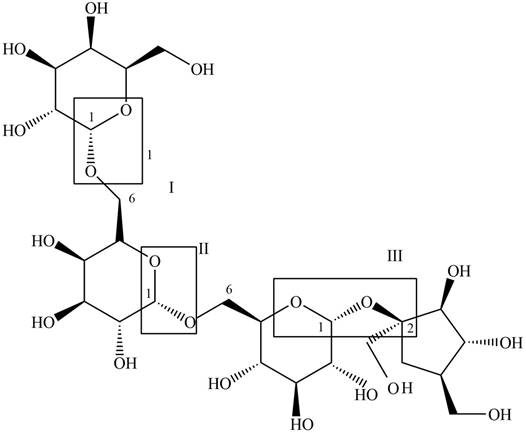
Figure 1
Explanation of Solution
The structure of stachyose,

Figure 1
The glycosidic linkages which are composed of alkoxy group above the plane are
The glycosidic linkage
(c)
Interpretation: The products formed on hydrolysis of stachyose are to be predicted.
Concept introduction: Glycosidic linkages are hydrolyzed in presence of acid to form cyclic hemiacetal and corresponding alcohol. Acetals in the presence of acid undergo hydrolysis to form cyclic hemiacetals.
Answer to Problem 28.66P
The products formed on hydrolysis of stachyose are,
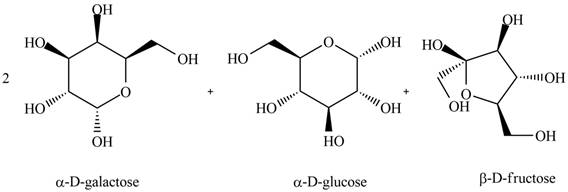
Figure 2
Explanation of Solution
On acidic hydrolysis of stachyose, the glycosidic linkages are cleaved to form the four products. The corresponding
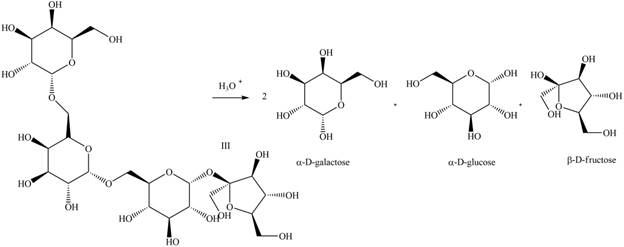
Figure 3
The products formed are
(d)
Interpretation: The validation to the corresponding fact that whether stachyose is reducing sugar or not is to be stated.
Concept introduction: The reducing sugars contain hemiacetal and they undergo mutarotation. These sugars are in equilibrium with cyclic monosaccharide forms.
Answer to Problem 28.66P
Stachyose is not a reducing sugar.
Explanation of Solution
The given tetrasaccharide stachyose does not contain any hemiacetal and does not undergo mutarotation. Thus, the given tetrasaccharide is not a reducing sugar.
The product formed on treatment of stachyose with excess
(e)
Interpretation: The product formed on treatment of stachyose with excess
Concept introduction: The hydroxyl groups of monosaccharides are converted into the ether groups in presence of base and
Answer to Problem 28.66P
The product formed on treatment of stachyose with excess
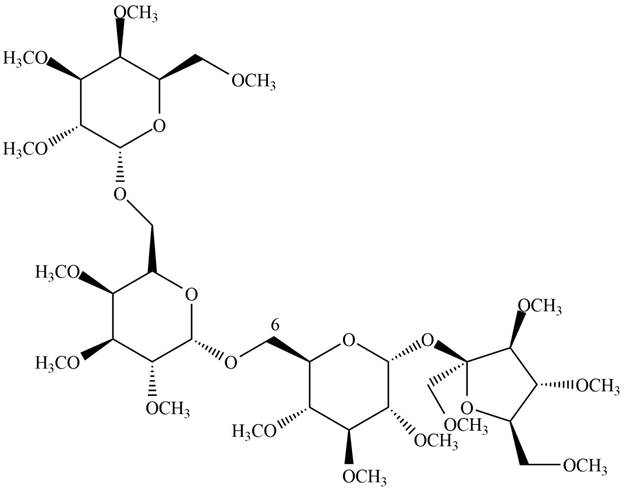
Figure 4
Explanation of Solution
On treatment of stachyose with excess
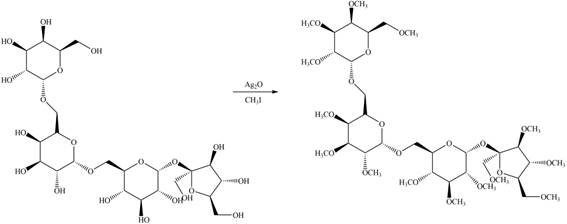
Figure 5
The product formed on treatment of stachyose with excess
(f)
Interpretation: The product formed on treatment of product in (e) with
Concept introduction: Glycosidic linkages are hydrolyzed in presence of acid to form cyclic hemiacetal and corresponding alcohol. Acetals in the presence of acid undergo hydrolysis to form cyclic hemiacetals.
Answer to Problem 28.66P
The products formed on treatment of product in (e) with
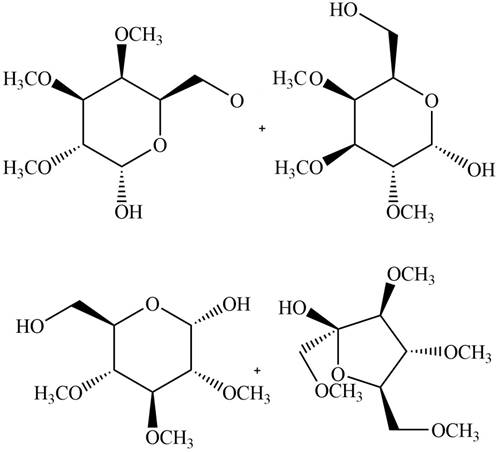
Figure 6
Explanation of Solution
On acidic hydrolysis of the given compound, the glycosidic linkages are cleaved to form the four products. The corresponding chemical reaction is shown below.
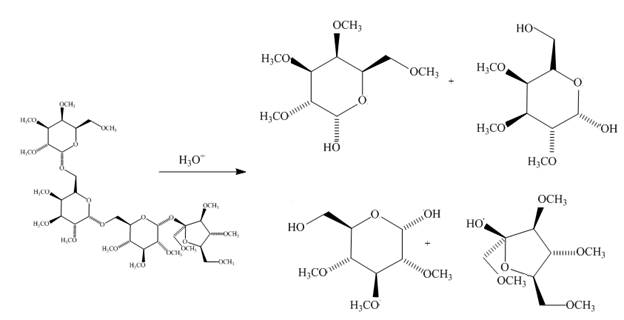
Figure 7
The products formed on treatment of product in (e) with
Want to see more full solutions like this?
Chapter 28 Solutions
Organic Chemistry
 Introduction to General, Organic and BiochemistryChemistryISBN:9781285869759Author:Frederick A. Bettelheim, William H. Brown, Mary K. Campbell, Shawn O. Farrell, Omar TorresPublisher:Cengage LearningChemistry: Matter and ChangeChemistryISBN:9780078746376Author:Dinah Zike, Laurel Dingrando, Nicholas Hainen, Cheryl WistromPublisher:Glencoe/McGraw-Hill School Pub Co
Introduction to General, Organic and BiochemistryChemistryISBN:9781285869759Author:Frederick A. Bettelheim, William H. Brown, Mary K. Campbell, Shawn O. Farrell, Omar TorresPublisher:Cengage LearningChemistry: Matter and ChangeChemistryISBN:9780078746376Author:Dinah Zike, Laurel Dingrando, Nicholas Hainen, Cheryl WistromPublisher:Glencoe/McGraw-Hill School Pub Co Organic ChemistryChemistryISBN:9781305580350Author:William H. Brown, Brent L. Iverson, Eric Anslyn, Christopher S. FootePublisher:Cengage Learning
Organic ChemistryChemistryISBN:9781305580350Author:William H. Brown, Brent L. Iverson, Eric Anslyn, Christopher S. FootePublisher:Cengage Learning Introductory Chemistry: An Active Learning Approa...ChemistryISBN:9781305079250Author:Mark S. Cracolice, Ed PetersPublisher:Cengage Learning
Introductory Chemistry: An Active Learning Approa...ChemistryISBN:9781305079250Author:Mark S. Cracolice, Ed PetersPublisher:Cengage Learning
 Chemistry: An Atoms First ApproachChemistryISBN:9781305079243Author:Steven S. Zumdahl, Susan A. ZumdahlPublisher:Cengage Learning
Chemistry: An Atoms First ApproachChemistryISBN:9781305079243Author:Steven S. Zumdahl, Susan A. ZumdahlPublisher:Cengage Learning





